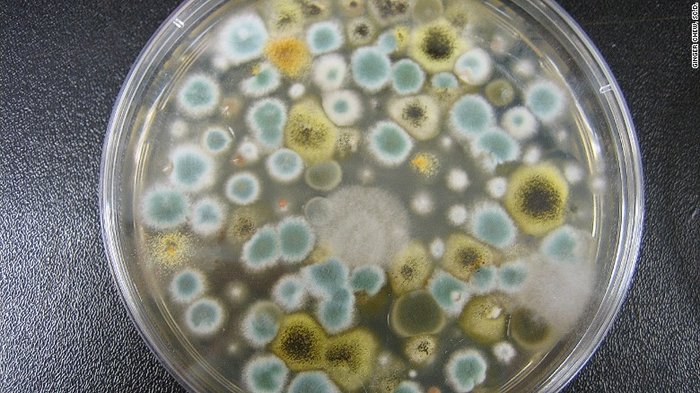How fungi kill millions globally

But these tiny organisms can be fatal and kill an estimated 1.5 million people globally each year. It`s a shockingly high figure and is greater than the number of people who die from malaria, more than twice the number of women who die from breast cancer, and an equivalent number to those who die from tuberculosis, or HIV, each year, according to professor Neil Gow, President of the Microbiology Society.
Of course, it`s not the superficial infections like athlete`s foot that are killing millions. There are certain kinds of fungal infections that can invade our blood, lungs and other organs within the body -- and there are a lot of them out there.
Matching the number of deaths each year, there are around 1.5 million species of fungi -- tiny microbes found in soil, air and water -- and we interact with them every day. Three hundred of these are known to make people sick, with some proving to be fatal.
Fatal fungi
"Almost nobody has heard of Cryptococcus, Candida, or Aspergillus, but the three of those probably account for more than a million deaths every year," says Gow.
He estimates that the fungus Cryptococcus, which mainly affects people with HIV in sub Saharan Africa, is killing between 200-600,000 people every year.
When Pneumocystis is added to the mix, these four fungi account for more than 90% of fatal fungal infections worldwide, says Gow.
And importantly, they aren`t rare. In fact, most of us are in contact with them regularly.
"Somewhere between 100 to 300 spores of a fungus called Aspergillus get in our lungs every day," says Gow, "We deal with it perfectly well because our lungs are full of immune cells, which patrol around looking for these spores, and they swallow them up and kill them."
But for people with weakened immune systems, Aspergillus can cause lung disease and can kill after as little as 10-14 days, according to David Denning, professor of Infectious Diseases in Global Health from the University of Manchester. "It`s fairly uncommon, but still life-threatening," he says.
People with asthma and cystic fibrosis -- a genetic condition that can lead to excess mucous in the lungs -- are also more susceptible to lung disease from Aspergillus, which can cause pneumonia-like symptoms for them, such as coughing up mucus and wheezing.
These fungi are also some of the most misdiagnosed infections in intensive care units in the UK according to Denning, which, when coupled with late diagnosis and the presence of severe underlying diseases, is what makes them deadly.
From mild to deadly
Not all infections are fatal. Treatable skin infections, or dermaticites, could be considered the most common fungal infection of all, affecting as many as 1-2 billion people, and resulting in ringworm, athlete`s foot and even dandruff, says Gow.
Many healthy people also naturally carry the species of yeast-like Candida fungi in, and on, their bodies, without it being harmful. Candida can also cause superficial infections like vaginal thrush and while this is treatable, it remains a burden for many, with 100 million women suffering four or more episodes annually.
But even seemingly mild fungi like candida can prove deadly when immune systems are weakened. People living with HIV/AIDS, organ transfer patients, or cancer patients undergoing chemotherapy are vulnerable to this range of fungal infections that would normally be harmless or treatable.
The burden on healthcare systems is equally huge, with hospitalization costs estimated to range from $11,000 to $57,000 for a patient with an invasive fungal infection -- and experts are warning that the issue needs more attention.
Preventing infection
"Prevention is better than a cure," says Gow. "One of the things about fungi is that they`re quite difficult to dislodge once they start to grow.
"There`s not a single vaccine against any fungus at the moment."
Without the option of a vaccine, hospitals have to work hard to avoid exposure: patients can be given drugs to help prevent infection, some hospital wards may not allow flowers because of the risk of fungal spores spreading, and they can also use air filtration barriers to protect patients. But the public also need to be informed to avoid exposure.
"It`s still the case that this information is not really even understood, and not fully appreciated by all members of even the professional community of microbiologists, and certainly not by the general public," says Gow.
The hope is that these little known infections will gain more recognition for what they really are -- global killers.















































